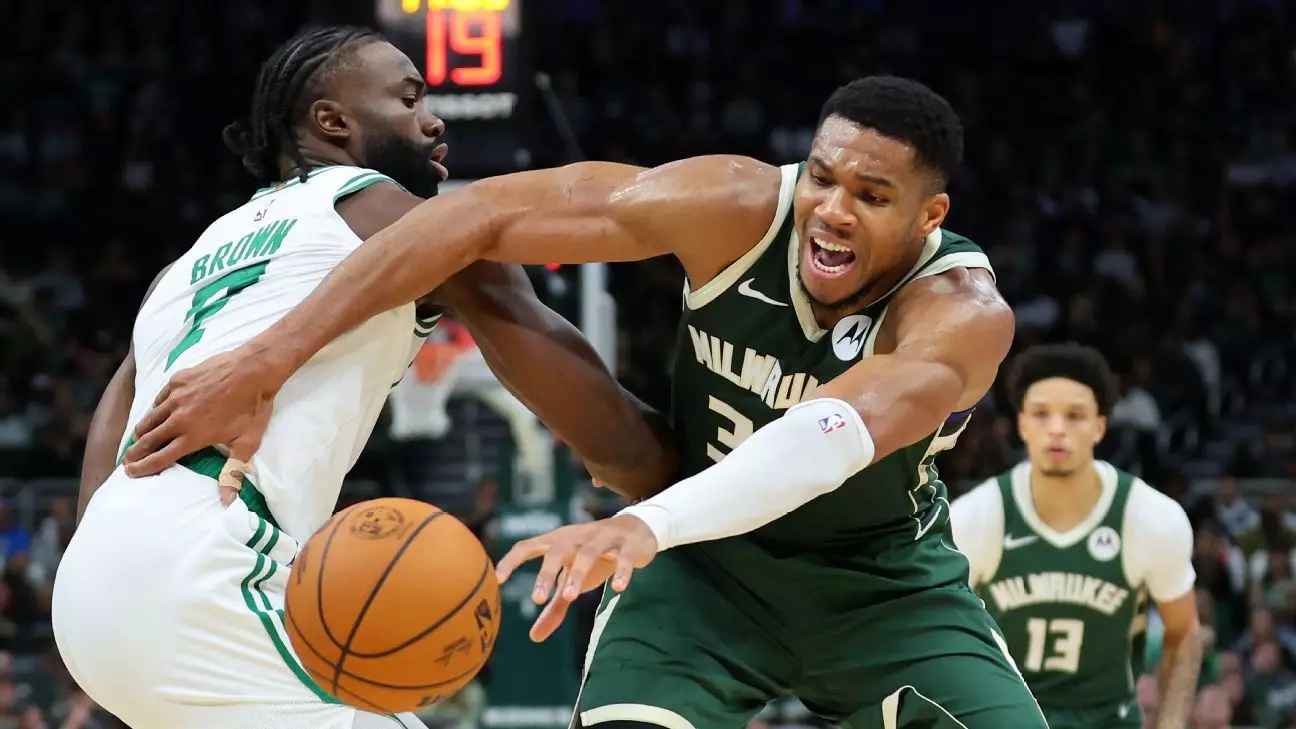In a thrilling matchup that showcased the intensity and passion of professional basketball, the Boston Celtics emerged victorious over the Milwaukee Bucks with a final score of 113-107. However, the event gained attention not only for the outcome of the game but also for a notable interaction between two of the league’s brightest stars: Jaylen Brown of the Celtics and Giannis Antetokounmpo of the Bucks. This article delves into the implications of their on-court gestures and the emotional undercurrents that characterize high-stakes competition.
The NBA is an environment where competitive spirit often blends with personal rivalries. This particular game followed a backdrop of historic matchups between the Celtics and the Bucks, with both teams contending for dominance in the Eastern Conference in recent years. Adding to the drama was the fact that Brown had just returned after a four-game absence due to a hip injury, increasing the stakes for him personally. As the game unfolded, tensions simmered not just from the score but also from the behaviors exhibited by players on the court.
During the second quarter, Antetokounmpo’s playful fake handshake towards Brown drew attention. While intended as lighthearted, the gesture did not land as Antetokounmpo had hoped. Brown’s refusal to engage highlighted the complexities of emotions in such heated moments. His immediate rejection of the handshake, coupled with his subsequent comments, suggests a profound focus on competitive integrity.
After the game, Brown candidly referred to Antetokounmpo’s actions, labeling him as „a child.“ His words illuminated the challenge athletes face in balancing camaraderie and competitiveness. For Brown, who emphasized his commitment to his team’s victory, the playful gesture might have seemed incongruous with the seriousness of their battle on the court. On the opposite end, Antetokounmpo expressed confusion over Brown’s reaction, emphasizing his intention to inject joy into the game. This dissonance in perception poignantly illustrates how personal motivations can influence interpretations of actions during competition.
Moreover, the incident draws attention to the social dynamics among players within the league. While Antetokounmpo attempted humor, Brown’s reaction underscores the high-pressure environment where athletes are often solely focused on their performance and the outcome of the game. This is particularly evident in the backdrop of a struggling Bucks team, attempting to navigate the early season’s challenging waters.
As the game progressed, Brown found himself involved in a more serious incident when he was assessed a flagrant foul after challenging Antetokounmpo as he drove to the basket. While officials deemed the contact excessive, Brown asserted that it was not a direct retaliation for the earlier exchange. This perspective adds another layer to the narrative, raising questions about the nature of sportsmanship. In competitive sports, the boundary between colluding enjoyment and serious rivalry can become blurred, especially when players seek to maintain a certain reputation.
When Antetokounmpo stated, „If I’m called a child, so be it,“ he reflected a philosophical approach to the sport: enjoyment is key. Although this mentality may be crucial for a player like him, who shines in moments of levity, it may not resonate with every athlete. The fundamental difference in their approaches to competition and interaction on the court can reveal significant insights into their personalities and leadership styles.
The back-and-forth between Brown and Antetokounmpo places them both under the spotlight as role models for young athletes. The emotionality that accompanies competitive sports is palpable, and their encounter illustrates the importance of understanding the nuances of interactions in high-pressure situations. While Brown prioritizes seriousness, Antetokounmpo embodies a spirit that believes joy can coexist with competition.
Moving forward, the struggle for both teams will be to harmonize their respective philosophies to foster cohesion and resilience. For the Bucks, the urgency to improve their record looms large as they embark on a critical stretch of games. In contrast, the Celtics, buoyed by Brown’s comeback and their victory, aim to build upon this momentum.
Ultimately, this episode reveals that beyond the stats and scores, human interaction—humor, rivalry, and respect—shapes the narrative of sports. Understanding this dynamic can enhance both competitive play and the broader appreciation of the sport. As Brown, Antetokounmpo, and their teammates navigate the chessboard of the NBA season, their experiences reflect the intersections of professionalism, competition, and humanity.


Napsat komentář